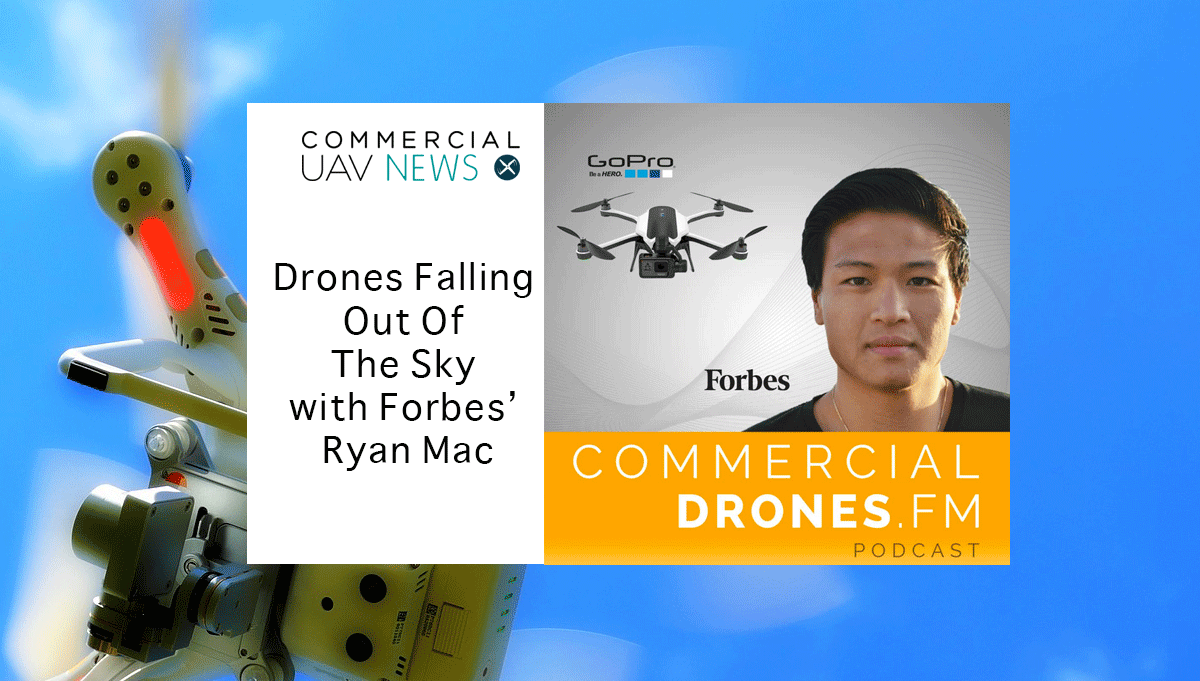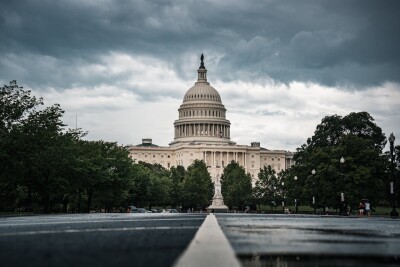To say the rollout for GoPro’s Karma drone has been troubled is a bit of an understatement. While the drone is once again available for purchase, it had to be universally recalled because of an issue that caused many of the drones to fall out of the sky. The events that led up to this development are both fascinating and sometimes unbelievable. That history and more is laid out in a concise story on episode #40 of the Commercial Drones FM Podcast - Drones Falling Out Of The Sky with Forbes’ Ryan Mac.
Based on Ryan Mac’s Forbes article, “The Sky Is Falling For GoPro,” the episode explores the history between GoPro and DJI as well as the various people who were and still are involved with each company. Ryan and host Ian Smith details the major events and developments that have helped shape the present and future for these companies and even for the drone industry as a whole.I was able to connect with Ian to gather some additional info about both companies along with advice for operators that want to use these drones for professional purposes. Read through the additional insights Ian provided before or after listening to the podcast below. You can also listen to the episode on iTunes or GooglePlay. Jeremiah Karpowicz: The narrative structure of this episode was different than your usual interview format. I thought it was very successful, but what can you tell us about the process to put together this type of show versus an interview or overview format?Ian Smith: I'm glad someone is asking this question! I had a ton of fun making this episode but it was definitely a lot more work than previous interview-style episodes. Funnily enough, this episode with Ryan Mac was originally intended to be the traditional, interview-style type, but the story was just so good in its telling that I made the decision afterwards to put in the extra work and experimentation required to make this narrative story format. I'm very proud of the end result, as I don't think this style of storytelling has been used in the drone industry before.You talked about a time when DJI and GoPro were looking at working together more closely. If different people had been involved in those talks, do you think they could have worked something out? Or ultimately, were the companies always destined to run up against one another?I think that DJI is intrinsically linked to CEO Frank Wang in such a way that the company could never really be what it is today without Wang at the helm, calling shots and making big decisions. The attitude of DJI as a company is very self-aware and encased in an aura of confidence that you rarely find in companies this relatively new to the scene.With that said, Wang is DJI and DJI is Wang. The talks would've never gone a different way unless there was someone different in GoPro that was willing to bend to Wang's whim. I feel that the ultimate result was beneficial for DJI as it allowed them to decouple themselves from GoPro, who would become a struggling public technology company. Additionally, DJI arguably makes much better cameras for aerial imagery than GoPro does today.While this battle between GoPro and DJI was and is centered on those two companies, it was interesting to see how 3DR played a role in the story. Would all three of these companies be in a different position today if GoPro had continued to support and develop their products for the Solo, rather than move forward with plans for the Karma?Drawing on my previous comments above about Wang's DJI, I don't think that a deeper GoPro and 3D Robotics partnership centered around the Solo would've turned out well. Putting a GoPro on a drone was never really the solution to the problem of getting good aerial video or photos. It was really just the smallest camera with the best quality that could be put on a small drone, so that's why it was used. DJI leapfrogged GoPro and 3D Robotics by integrating in-house cameras into their drones with even better quality than GoPro could put out at the time. GoPro would've have to completely alter the way they made cameras in order to produce something for Solo that would make DJI seem inferior. Additionally, Solo had an abysmal ecosystem built around it and relied on WiFi datalink connections, while DJI had already released their SDK and embraced their developers. Solo was planned to have a similar play but the lack of integrated gimbal, reliance on GoPro, and internal mismanagement all contributed to a losing battle against DJI. You summarized the whole issue very nicely by saying, “it’s hard to make a drone”, and that reality is one GoPro has been and currently is living with. We often read about how drone hardware is on the way to becoming commoditized, but this is a good reminder that regardless of how simple, easy or cheap drone hardware becomes, aerodynamics is a complicated subject, isn’t it?That's definitely the case. There is so much that goes into manufacturing a drone at scale that you cannot expect to jump right into it and be successful. Throwing money at solving the problem won't work. This is why it's so incredibly difficult to compete with DJI right now. Systematically dismantling 3D Robotics' Solo efforts is exhibit A in DJI's domination of the drone space. A company must make a concerted, well-thought-out, and utterly transparent effort to compete with DJI in order to even survive in the commercial drone hardware market right now. Every single company which makes a drone that could even remotely be considered as competing with a single DJI product has a deep strategy and many internal meetings which very seriously take the Chinese company into account. If DJI did not exist, GoPro's Karma and 3D Robotics' Solo may have been able to recover from their blunders, as we saw with DJI's early issues with flyaways and such. We'll have to wait and see what happens next to see if this thesis is fact—this isn't a no-brainer industry. Is there any advice you’d give to professionals who are looking to use either of these drones for commercial purposes?So if you're going to use GoPro's Karma drone professionally, I'd imagine it's just for video. To be honest, this may be a decent starter drone but I cannot realistically endorse it since I've never flown it and know of many of its shortcomings compared to DJI. Solo has of course also been a massive commercial flop so I wouldn't ever recommend finding or using one of those platforms for commercial work. Realistically, DJI has you covered from starter drone (Mavic Pro) to full on commercial powerhouse (Matrice 200 series). Price ranges and capabilities vary but you're paying for proven technology, a rich ecosystem, a company which has justified its long-term existence, and hardware and software capabilities that are unrivaled. It will then come down to what commercial work you want to do—aerial photography, video, photogrammetry, inspection, search and rescue, agriculture, etc. DJI has you covered on every front.But my last word on this will be that this is not an open and shut case. There absolutely needs to be competition for DJI. I'm rooting for any company who can go toe-to-toe. It's better for the industry, the advancement of the technology, and I think even DJI is begging for it. Because obviously, they love to compete.Subscribe
The information you submit will be stored and used to communicate with you about your interest in Commercial UAV News. To understand more about how we use and store information, please refer to our privacy policy.
April 12, 2017
The Story Behind DJI vs GoPro – Commercial Drones FM Podcast Insights
















Comments